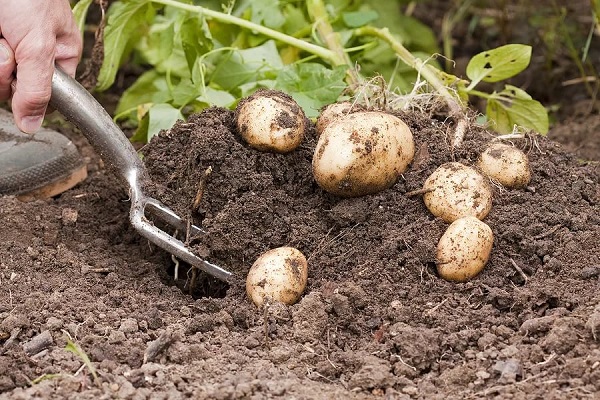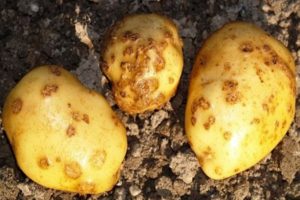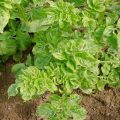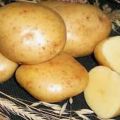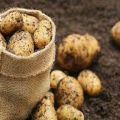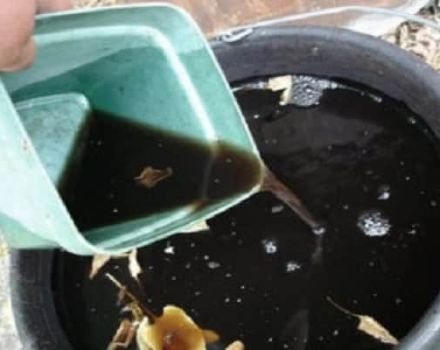Description of the Impala potato variety, features of cultivation and care
Despite the fact that the Impala potato was bred more than 20 years ago, it has not lost its popularity among gardeners, since it is adapted to different climatic conditions and has a good yield. This early Dutch potato variety is grown in Moldova and Ukraine, planted both in the northwestern and central regions of Russia, and in the southern regions, Kalmykia, Chuvashia, Udmurtia.
Description of the variety
The potato has a special place on the table. It is added to soups, borscht, salads, fried and boiled, baked, consumed all year round. This vegetable has a lot:
- vitamins;
- microelements;
- starch;
- folic acid.
Potato helps to reduce lipid plaques, is used as a dietary meal for arthritis, kidney disease, metabolic disorders. Impala is considered one of the the best varieties of potatoes... The one who grew it writes only positive reviews, since he did not notice the negative sides. The vegetable is also adapted to the arid climate of the Volga region, normally tolerates cool and humid weather.
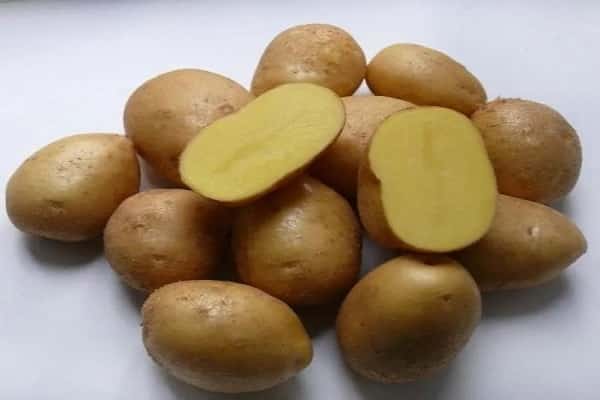
Based on the description of the Impala potato, about 20 tubers are dug from one bush, each of which has:
- great taste;
- yellowish pulp;
- weighing up to 150 g;
- oval shape;
- thin and dense skin.
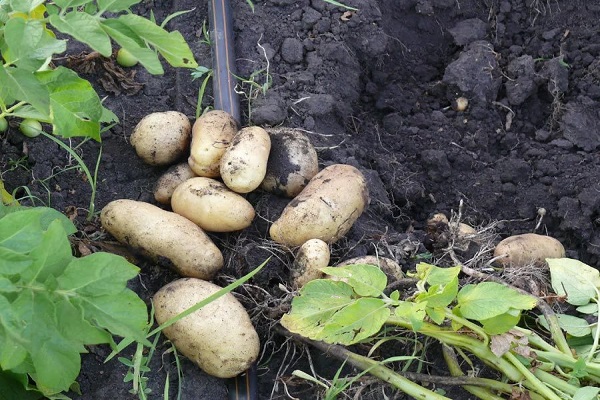
Dense erect bushes of this variety branch into 6 or 4 shoots and rise to a height of 70 centimeters. Small leaves have a dark green tint. The flowers of the plant that are collected in the brush are white in color with an orange center.
Tubers do not boil over, do not darken after cooking. The percentage of starch in them exceeds 14.5%. Potatoes practically do not spoil until spring, do not sprout, and are perfectly transported over any distance.
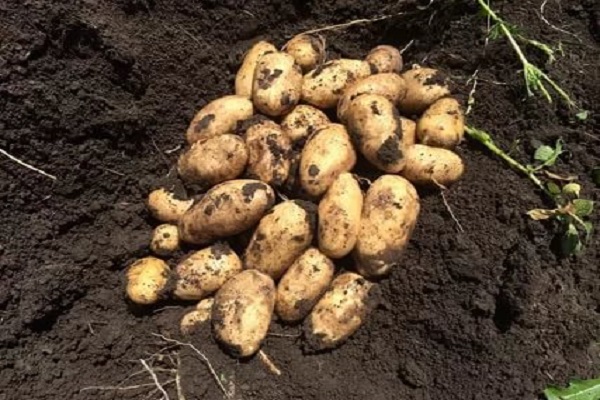
Main characteristics
Impala ripens on average 60 days after planting, so gardeners in the northern regions are happy with it, where summer ends quickly. Those who grew this variety managed to dig up the tubers before the onset of prolonged rains.
In the southern regions of Russia and Ukraine, and even in the Krasnoyarsk Territory, potatoes can be consumed after a month and a half. The vacated holes are poured with water and the roots are placed again. Summer residents grow a second crop in the garden, choosing garlic from it.
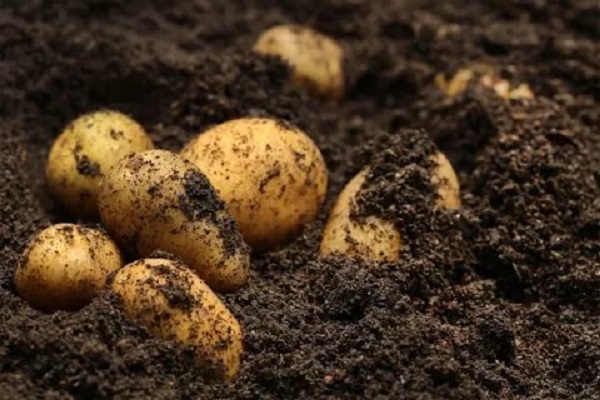
The Impala potato variety is rarely affected by:
- fusarium rot;
- ordinary scab;
- alternaria;
- black leg.
In the first planting, about 370 centners of root crops are harvested per hectare of land, in two - up to 600.
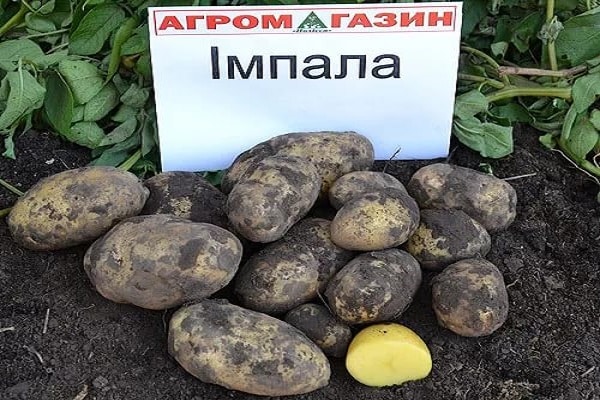
The characteristic of the variety was able to attract farmers in the southern regions, since the opportunity to have 2 crops significantly increased profits. Summer residents like the taste of potatoes, especially when young, when the thin skin is peeled off by itself.
Impala grows on any land, tolerates drought and high humidity, and is resistant to nematodes, potato viruses and cancer.
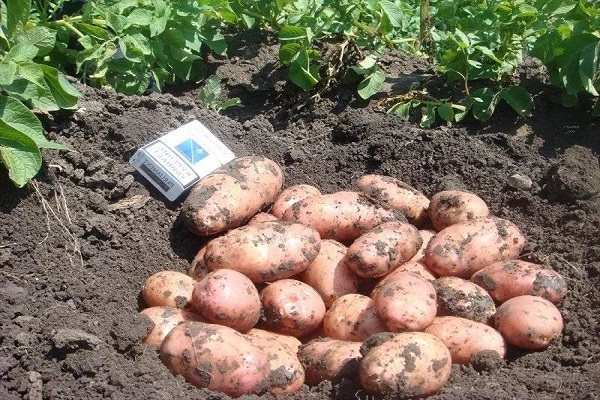
Planting recommendations
Tubers left for sowing do not need to be germinated. Sprouts sprout in the ground, but they do not develop as quickly as many summer residents want. For those who dream of an early harvest, boxes of potatoes should be placed for a month in a room where the temperature is at least 18 degrees.
If you want to dig up the root crops very early, then the tubers are planted in pots in the second decade of March, covered with plastic wrap, which is removed when the sprouts sprout. The bushes are moved into the warmed-up ground together with the soil.
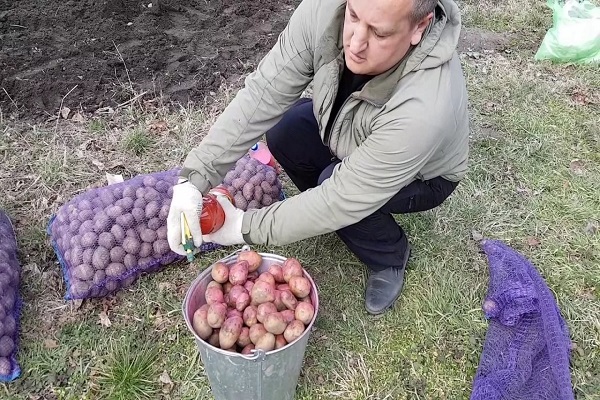
The one who planted the Impala variety claims that you can count on a good potato crop if you do not ignore certain requirements:
- Tubers should be free of cracks and spots, medium-sized root crops are selected, and medium ones with a diameter of 50 ml, on which there are many eyes.
- Potatoes are soaked for half an hour in a solution of boric acid or potassium permanganate. Such substances prevent the development of scab and fusarium.
- If sprouts have already appeared, they cannot be cut off. The bush will get sick, the harvest will be less.
- The garden bed must be broken up, where legumes, cereals, and mustard were previously planted. Poor precursors for potatoes are tomatoes, bell peppers, hot peppers, and eggplants.
- The same variety is returned to its original place only after a few years.

Since autumn, the soil is fed with ammonium nitrate, which contains water-soluble nitrogen. Rotted manure improves its structure. Too much fertilizer degrades the taste of potatoes.
Disembarkation and leaving
In April or early May, holes are made in warm ground at a distance of 30 cm. Dig them to a depth of 8 centimeters. A glass of wood ash is placed in each hole, potato tubers placed so that the eyes are on top. The wells are sprinkled with soil to make a small ridge.
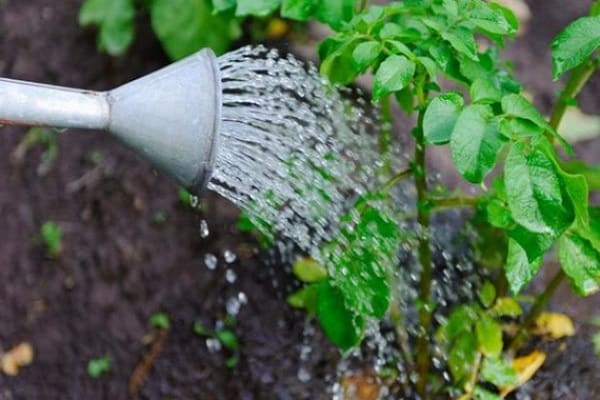
As the sprouts begin to emerge from the ground, which is usually observed after 2 weeks, the beds, which should be planted every 50 cm, begin to spud.
In the northern regions, there is no need to water the Impala potatoes. In the southern regions, moisture is produced 14 days after sprouting, during flowering and then after 2 weeks. After finishing watering, start feeding. The first time ammonium nitrate is applied, the second - fertilizers containing phosphorus and potassium, then a complex of minerals. After each humidification or rain, you need to pull out the weeds with the roots, loosen the soil.

The leaves and stems of potatoes are adored by the Colorado potato beetle. This seemingly harmless insect destroys entire fields of nightshade crops in a short time. Traditional methods in the fight against a pest do not bring success, and voracious larvae appear along with the first shoots. It is impossible to collect them manually.
To save potatoes from beetles, the bushes are sprayed with biological agents such as "Bitoxibacillin" or chemical preparations "Desis", "Karate", "Calypso", "Aktara".

How to raise yields?
In order for the bush to have at least 20 large potato tubers, loose and fertile soil is needed. Digging a garden or plowing a field must be deep. Experienced growers recommend placing the potato furrows towards the south. Then the sun shines on the bushes all day, and they will be warm.
The roots of the plant develop already at 7 degrees with a plus, but for them to grow quickly you need at least 22. The optimum temperature for flowering is 18–20. Impala potatoes are adapted to hot and dry weather, but for the harvest to be happy, the soil must be wet, and if only 250 mm of rain fell during the season, the beds have to be watered.
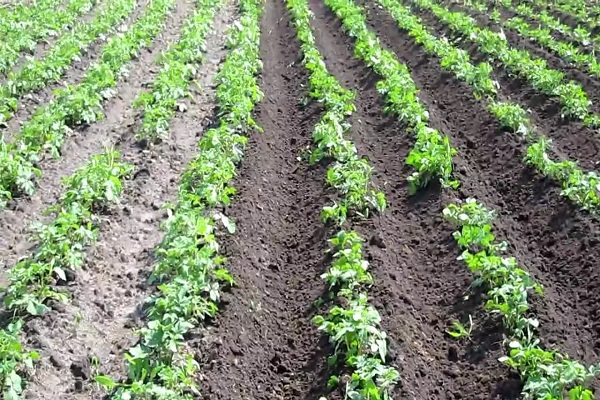
Spraying the leaves with "Fitosporin" helps to increase the immunity of the crop, to prevent the defeat of potatoes by fungal diseases.
It is advisable to change the tubers for planting at least once every 5 years, otherwise the variety is reborn, the yield decreases. You can harvest potatoes for seeds yourself, but it is better to buy them in a store, order them online. Root vegetables will be larger if flower brushes are cut off.

After reading the description of the Impala potato variety, some summer residents living in the central regions hoped to get a second crop. However, only gardeners of the southern regions, where there is a lot of sun and a long summer, can engage in planting crops in order to count on 2 collections of tubers.
Subject to agricultural techniques, timely pest control, farmers grow large potato tubers, from which they have excellent profits, and summer residents provide themselves with the product until next spring.
